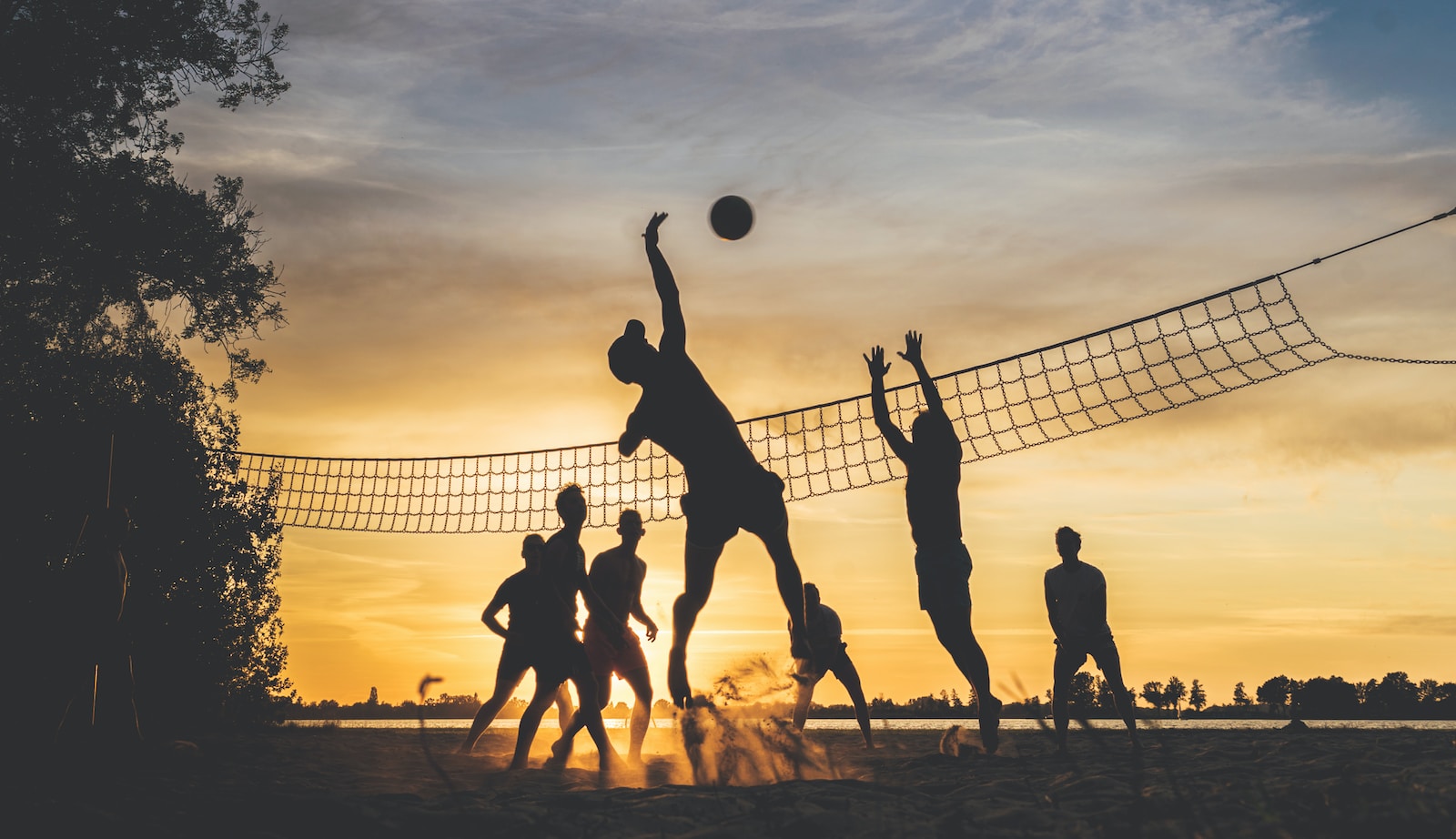Beach volleyball and indoor volleyball have evolved into distinct sports with unique attributes.
However, beach volleyball can significantly contribute to the development of an indoor volleyball player.
The sandy surface of a beach court necessitates greater effort to move and jump, improving strength, agility, and overall fitness levels.
Moreover, beach volleyball typically involves teams of two instead of the six-player setup of indoor volleyball.
This difference in team size means that beach players must be well-rounded, proficient in various aspects of the game, including serving, passing, setting, hitting, and blocking.
Additionally, the smaller team size in beach volleyball fosters enhanced communication and teamwork.
The outdoor environment of beach volleyball exposes players to variable weather conditions, including wind, sun, and heat.
Adapting to these elements sharpens players’ focus and mental resilience, attributes that can positively impact their indoor game.
Beach volleyball offers a range of physical and mental benefits that can help players excel in indoor volleyball, making it a valuable cross-training tool.
Benefits Of Playing Beach Volleyball For Indoor Volleyball Players
Improved Physical Fitness
The sandy surface of beach volleyball courts demands greater effort to move and jump.
As a result, playing beach volleyball strengthens leg muscles, enhances agility, and boosts overall fitness levels.
These improvements in physical conditioning can significantly benefit an indoor volleyball player’s performance.
Versatility And Skill Development
Beach volleyball requires players to be proficient in the game, including serving, passing, setting, hitting, and blocking.
By developing their skills across different positions, indoor volleyball players can become more well-rounded and adaptable, offering valuable contributions to their team in various roles.
Enhanced Communication And Teamwork
With only two players per team, beach volleyball necessitates constant communication and strategizing between teammates.
This close collaboration fosters a deeper understanding of the game, promotes quick decision-making, and enhances teamwork.
When transitioning back to indoor volleyball, players can leverage these improved communication skills for better coordination and performance.
Mental Resilience And Adaptability
Beach volleyball exposes players to variable weather conditions, such as wind, sun, and heat. Adapting to these elements helps build mental resilience and focus, which is critical for maintaining high-performance levels in indoor volleyball, especially during high-pressure situations.
Injury Prevention And Recovery
The softer, sandy surface of beach volleyball courts provide a lower-impact environment compared to indoor courts.
This reduced strain on joints and muscles can help prevent injuries and support recovery for indoor players, allowing them to maintain peak physical condition throughout the season.
How Beach Volleyball Can Supplement Indoor Volleyball Training?
Beach volleyball can effectively supplement indoor volleyball training by providing players with unique challenges and opportunities for growth.
Integrating beach volleyball into indoor players’ training regimen can enhance their overall skills and abilities.
Cross-Training And Conditioning
The sandy surface of beach volleyball courts requires players to exert more energy for movement and jumping.
This increased effort translates into an effective cross-training workout, improving players’ cardiovascular fitness, muscle strength, and endurance, which can contribute to better performance on indoor courts.
Skill Reinforcement
Beach volleyball forces players to become proficient in all aspects of the game, from serving and passing to setting, hitting, and blocking.
Practising these skills in a beach setting can reinforce technique and improve overall skill mastery, making players more versatile and practical on the indoor court.
Tactical Awareness
With only two players per team, beach volleyball players need to develop a strong sense of spatial awareness and strategy.
This improved tactical understanding can be applied to the indoor game, enhancing decision-making and anticipation during play.
Communication And Teamwork
Beach volleyball’s emphasis on communication and collaboration can strengthen team dynamics and interpersonal skills.
By incorporating beach volleyball into their training, indoor players can develop better communication habits, leading to more efficient and coordinated play on the indoor court.
How Does Beach Volleyball Contribute To Improving Indoor Volleyball Skills?
Beach volleyball can enhance indoor volleyball skills by promoting adaptability, agility, and athleticism.
The sandy surface demands greater physical effort, which helps build stamina and lower body strength.
Additionally, beach volleyball requires players to cover more of the court, improving their speed, court awareness, and anticipation.
The outdoor conditions, such as wind and sun, also teach players to adjust their techniques, which can be beneficial when transitioning back to indoor volleyball.
Does Beach Volleyball Enhance Defensive Skills In Indoor Volleyball?
Beach volleyball can substantially improve defensive skills for indoor volleyball players.
The sand court demands quick reactions and better body control, leading to enhanced diving, digging, and blocking abilities.
Additionally, the two-player team format of beach volleyball necessitates more frequent defensive plays, offering ample opportunities to refine these skills and become a more effective indoor player.
Does Playing Beach Volleyball Lead To An Improvement In Skill And Ability?
Beach volleyball is widely recognized as an effective way to enhance indoor volleyball performance.
The sand surface helps players develop a smoother movement on the court, fostering increased court awareness.
The challenging conditions of playing on sand contribute to significant improvements in physical fitness, particularly in strength, endurance, and jumping capabilities.
By adapting to the unique demands of beach volleyball, athletes can experience a notable positive impact on their overall skill set and performance, making it an excellent method for boosting indoor volleyball proficiency.
Can Playing Beach Volleyball Put Strain On The Knees?
While beach volleyball is played on a softer surface, such as sand, compared to the hardwood floors of indoor volleyball, knee injuries can still be a concern for players.
The primary reason for these injuries is the repetitive jumping and landing actions performed during the game.
This continuous motion can lead to inflammation in the patella tendon, which connects the kneecap to the shinbone.
Even though the sand surface might provide some cushioning and reduce the impact on joints, the knee remains susceptible to injuries during gameplay.
Consequently, beach volleyball players must take necessary precautions, such as proper conditioning and training, to minimize the risk of knee-related injuries.
Is Beach Volleyball An Olympic Sport?
Yes, beach volleyball is an Olympic sport. It was first introduced as a demonstration event at the 1992 Summer Olympics in Barcelona, Spain.
Following its debut, beach volleyball was officially included as a medal event in the 1996 Summer Olympics in Atlanta, USA.
Since then, the sport has been a regular feature in the Olympic Games, with both men’s and women’s competitions taking place during the summer.
The popularity of beach volleyball has grown significantly over the years, making it a highly anticipated and exciting part of the Olympics.

